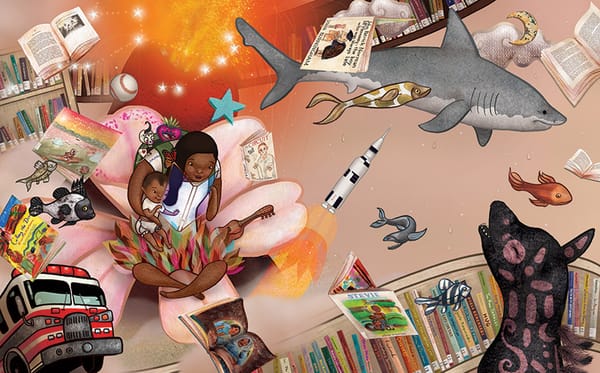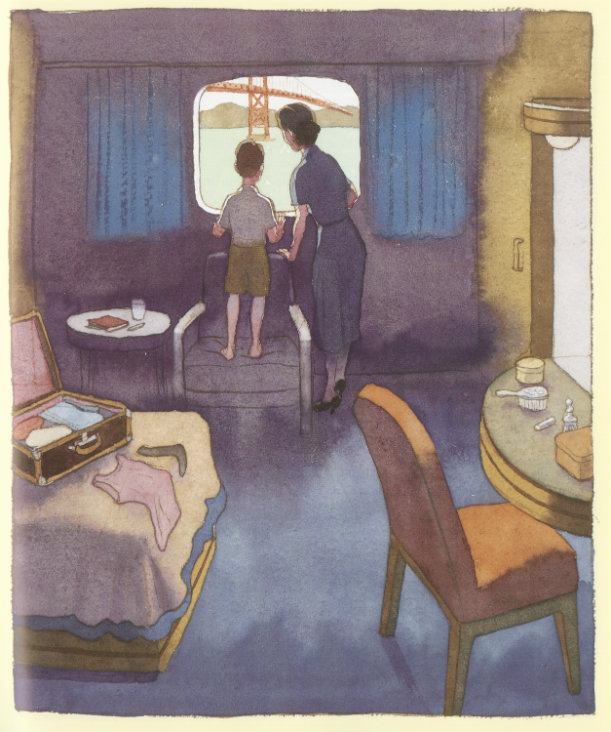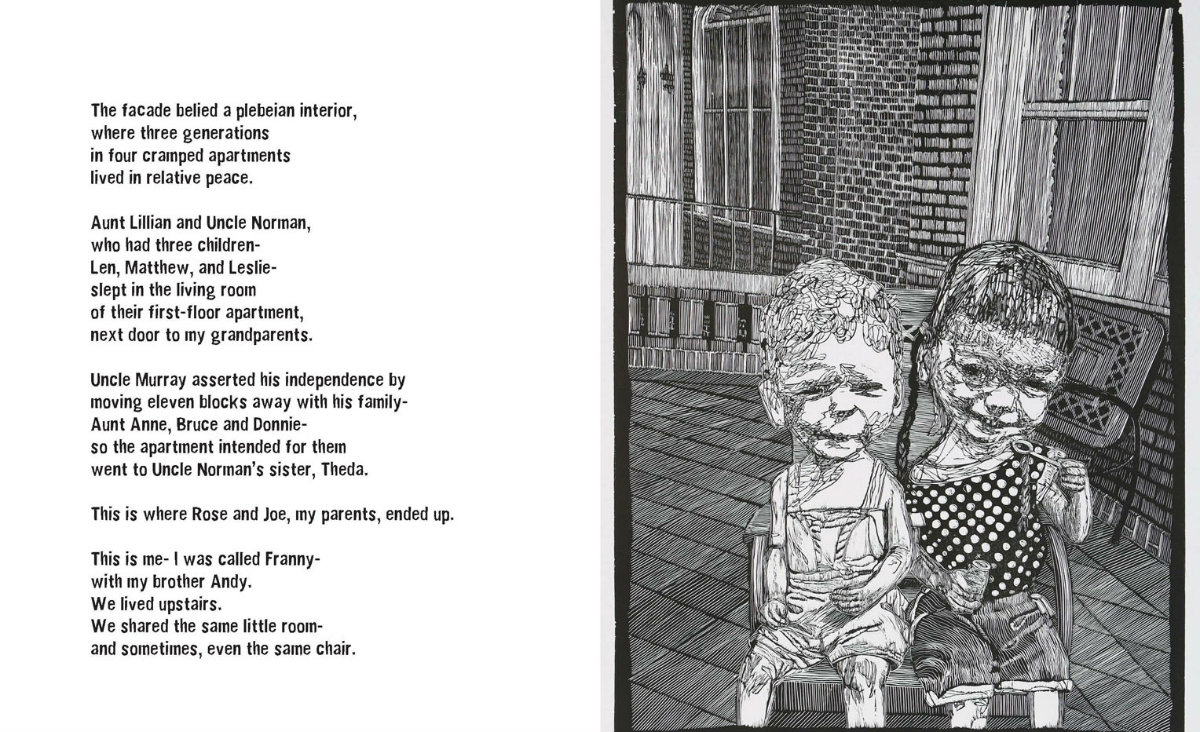Artists Define Home in “Four Crossings” at Norman Rockwell Museum
Master illustrators document the emotional realities of adapting to a new life.

Master illustrators document the emotional realities of adapting to a new life.

Yuyi Morales, Illustration for Unbelievable. Surprising. 2018. Mixed media digital. Dreamers (New York: Neal Porter Books, Holiday House Publishing, Inc.) 2018.
For the past eight years, the Norman Rockwell Museum in Stockbridge, Mass. has hosted the annual United State Citizenship Naturalization Ceremony. After each ceremony, the local newspaper features a photo of the regions’ newest citizens taking their oaths, and one wonders what these individuals have gone through to get to this point. Do they feel that they’re finally home?
Whether it was a long-ago ancestor or oneself, it took a crossing for most of us to become citizens. At the Norman Rockwell Museum, a new exhibit illustrates what exactly is brought over in the crossing from China, Poland, Mexico and England.
“Finding Home: Four Artists’ Journeys” is an exhibit by four master illustrators that documents the emotional realities of adapting to a new life thousands of miles away from where their stories began. Although there are many immigrant stories, the ones currently on exhibit in Stockbridge are executed with sublime detail and deft execution transcending the weight of immigration in the world today.
Artist Frances Jetter, a raven-haired beauty with pale skin and a Patti Smith countenance, speaks to exhibit goers from a video interview in which she states that her work begins with a series of scribbles that become, in the case of the work “Amalgam,” large format lino prints that contain striking emotion.
Jetter’s grandfather was the inspiration for“Amalgam.” He came to America from Poland in 1911 and worked as a pocket maker in a New York City garment factory. His union, the “Amalgamated” was a blend of people from different countries who fought for a living wage and for a limited hour work week in an era when the whole family worked in the garment factories.
One print containing an image and something akin to poetry is titled “Three Generations in Four Cramped Apartments.”
Beginning with the legend, “The façade belied a plebian interior” a self-portrait of Jetter with her brother sits opposite. They are rendered in lino and with complex crosshatching that conveys the complex terrain of poverty and love. The piece concludes with: “This is me, I was called Franny, With my brother Andy. We lived up stairs. We shared the same little room, And sometimes, even the same chair.”
David Macaulay is a Caldecott Award Winner, a MacArthur Grant Recipient and co-authored the best selling “How Things Work.” The illustrator was lucky enough to experience a five-day crossing as a young boy from a dark, north England industrial town to the bright fall of Northern New Jersey in 1957 on board the SS United States.
The experience never left him and found its way into a book entitled Crossing on Time: Steam Engines, Fast Ships, and a Journey to a New World.
In this children’s book, Macaulay documents, in architectural drawings of the ship and other imagery, his own family’s immigration story and that of the designer of the ship. William Francis Gibbs’s creation was one of the first steam engines. His intent was to make the SS United States a “flagship” of success and power in post-war America. Capable of crossing the Atlantic in three days, the SS United States was designed to contain passengers crossing the Atlantic like Macaulay and his family or 14,000 soldiers traversing the Panama Canal.
“Crossing On Time” contains original drawings, paintings and models utilized in the creation of the book.
The most exuberant work of the show is “Dreamers,” created by author and illustrator Yuyi Morales, who came to the United States with her infant son, Kelly, leaving her home in Xalapa, Mexico. During her crossing and early years in the U.S., Morales spoke no English but found solace in a public library. Her work in Dreamers presents the immigrant experience in a riot of color and imagery, containing not only large-format works but a gallery reading nook open to children and their families visiting the museum.
“Leaving China” is inspired by the World War II childhood of illustrator James McMullan, who is known for his Lincoln Center theater poster designs. His family traveled from China to India, Canada, and the United States. He was born in Tsingtao, North China after the war broke out and his father joined the Allied Forces. McMullan and his mother moved from one place to another — Shanghai, San Francisco, Vancouver, Darjeeling, following McMullan’s father.
The watercolorist and illustrator decided to organize his memories of his childhood before and during the Second World War into a narrative. With a dream-like quality created by the effects of watercolor, the work describes the tension of their lives when the Japanese army took over a town in China.
But you don’t need to be an immigrant (or an artist) to have your own story. On Saturday, Dec. 14 and several dates after that, the NRM Storybooth invites the public to bring a meaningful object or image and record the story behind it. Select stories will be shared through the digital interactive in the "Finding Home" exhibition.
The exhibit will run through May 25, 2020.
Finding Home: Four Artists’ Journeys
Norman Rockwell Museum
9 Glendarle Road/Route 183, Stockbridge, MA
(413) 298-4100


